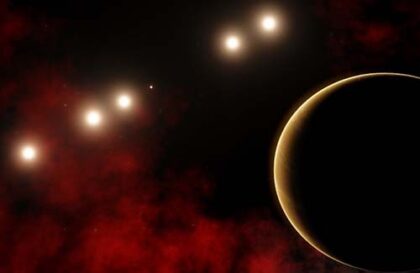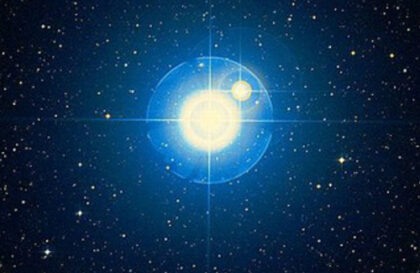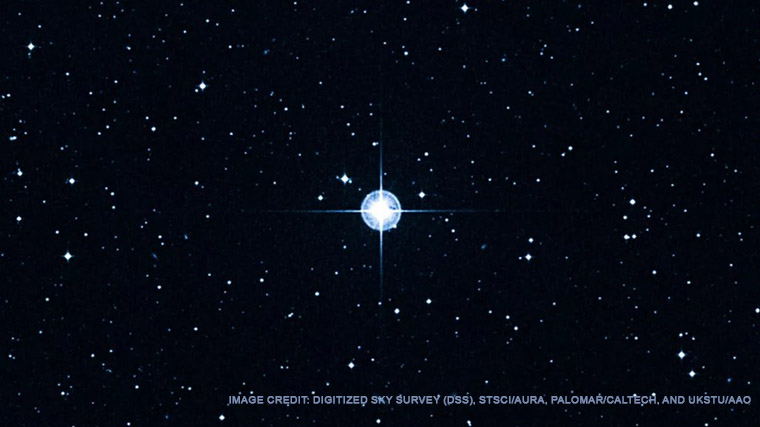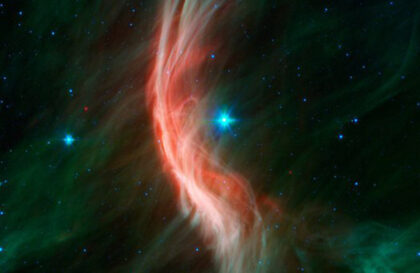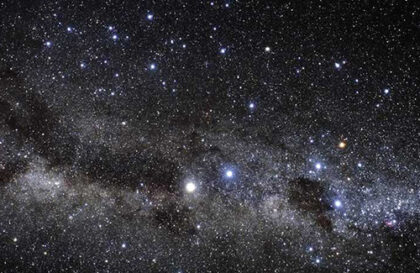Wouldn’t having two sunrises and two sunsets every day be great? This is precisely what happens for planets that orbit double stars. What are double stars like?
1. They come in different sizes.
Binary systems can form from stars of different masses and ages. There are various combinations:
- Two Sun-like stars: This is the most common combination, where both stars are similar to our Sun in mass and properties. They may be similar in age or different.
- Giant Star and Sun-Type Star: In this combination, one of the stars is much larger and is a giant, and the other is similar to the Sun. Such systems can form when one of the stars is much older than the other and has entered the giant stage.
- Two white dwarfs: A white dwarf is the final stage of a star that is no more than eight times the mass of the Sun. Such systems are often formed from stars that have completed their evolution.
- Neutron stars: Neutron stars are remnants of supernova explosions. They have very high density and small radius. Neutron star binary systems are often studied due to their extreme properties.
- Systems with a black hole: Fascinating systems where one of the stars is a black hole. Due to intense gravitational interaction, a black hole can “absorb” matter from its satellite.
The most massive known binary system is called R144. The light star in this system is about 95 times the mass of our Sun, and its heavyweight partner weighs as much as 205 Suns!
Credit: NASA, ESA, D. Lennon en E. Sabbi (ESA/STScI)
2. They draw different geometries in the sky
Rotating around each other, double stars can have circular or elliptical orbits, thus creating a circle or ellipse in the sky.
3. Some people like long-distance relationships.
Some binary star systems are at great distances from each other. An example is Mira, a pair of giant star and a white dwarf. These stars are separated by a distance 70 times greater than the distance from Earth to the Sun and will take approximately 500 years to complete an orbit around their common center of mass.
The Chandra image shows Mira A (right), a highly evolved red giant star, and Mira B (left), a white dwarf. To the right of the image is an artist’s conception of the Mira star system. Mira A is losing gas rapidly from its upper atmosphere via a stellar wind. Mira B exerts a gravitational tug that creates a gaseous bridge between the two stars. Credit: X-ray: NASA/CXC/SAO/M. Karovska et al.; Illustration: CXC/M.Weiss
4. Some people don’t like to break up
Some star pairs are surprisingly close to each other. HM Cancri, where two white dwarfs are so close to each other that they orbit their common center of mass in just 324 seconds!
5. Some people like to hug
Some double stars are so close to each other that they even touch. Astronomers call such systems “contact binaries.” They may explain the existence of a special type of star known as Thorne-Zytkow objects, where a giant star has in the past absorbed its neutron star neighbor.
A Thorne-Żytkow object is a theoretical type of hybrid star created when a dense neutron star is swallowed by a puffy red supergiant star, as seen in this artist’s concept. Credit: Astronomy magazine
6. Some people are obsessed with looking young.
As one of the stars in a pair gets older, it can lose its material due to a phenomenon that astronomers call stellar winds. This material can be attracted to a nearby star due to gravity. For this neighboring star, this is like new fuel, which allows it to “catch up” in its development! The star is rejuvenating.
7. Some of them are outstanding works by da Vinci
When one of the stars reaches such an age that it begins to lose its outer layers, its companion, as it orbits, creates beautiful spiral structures in this cosmic wind. These cosmic works of art can be seen using telescopes such as the Hubble Space Telescope or the Earth-based ALMA telescope in Chile.
ALMA – Chile. Credit: ESO
8. Some people like to explode
When both stars in a system reach old age, their stellar winds can eject material comparable in mass to Earth each month. When these winds collide, they cause powerful collisions, heating the gas to temperatures of several million degrees. This process produces bright radiation in the X-ray range, making it detectable by telescopes.
9. Some may have children
Wouldn’t it be amazing to have two sunrises and two sunsets daily? On planets orbiting double stars, this phenomenon happens! There are two options for the arrangement of planets in binary systems: they can revolve around both stars or only around one of them. However, the known planets orbiting a pair of stars do not yet provide conditions for life, at least not as we understand it.
This visualization depicts the discovery of the first planet, TOI 1388 b, in the binary system. Credit: NASA/Goddard Space Flight Center
10. Dead binary stars can communicate with the afterlife
The type of “remnant” a star leaves behind at the end of its life depends on its mass. Low-mass stars become white dwarfs, while more massive ones can become neutron stars or black holes. These cosmic bodies, in particular black holes, have fantastic density. When two such bodies orbit around each other, they cause vibrations in space-time, similar to ripples in water. The higher the density of a body, the higher these vibrations, and we can detect them on Earth as gravitational waves.
Based on materials from Martha Irene a Mexican astrophysicist.
Banner image: Illustration is by Martha Rosas Vilchis. The background image is the Great Orion Nebula by Joe Morris.
Image credit:
https://www.shespeaksscience.com
https://www.nasa.gov
https://www.ralspace.stfc.ac.uk
https://www.astronomy.com
https://www.astronomy.com

